Reviews
David Hemmings
Australia, 1981
Credits
Review by Adam Balz
Posted on 10 October 2007
Source Karl-Lorimar Home Video VHS
Categories 31 Days of Horror
The final ten minutes of David Hemmings’ The Survivor are absolutely astounding—a testament to the power of cinematography, the delicate art of dialogue, the rare genius of twist endings. They’re also a complete mess. After three minor characters are killed off, Omen-style, by a malevolent and altogether mysterious force, another reveals himself to be a gamesman from the depths of Hell—a hunter who has robbed 300 people of their lives, simply for sport. Sitting before the engine of our hero’s downed 747, a shotgun set artfully across his lap, he pronounces David Keller to be the most elusive of game: A man who has stumbled free from the claws of death, eluding capture and taunting those who were aboard his plane. “They want you, captain,†he says, “not me. The last one.â€
“They†are the dead passengers, burned alive when Keller’s plane tears through an Australian suburb in the film’s opening. Coming to rest in an abandoned field, it erupts into flames; from afar, the disaster appears apocalyptic, illuminating the sky with a rush of fire. Emergency personnel arrive within seconds, as do a slew of opportunistic journalists; one, an independent photographer, snaps pictures of a burning doll while his wife reloads cameras. Then, through a wall of debris, Keller emerges, his clothes darkened and body stiff but otherwise completely unscathed. He has no memory of what just occurred—the crash was nothing more than a missing block of time, framed by flight preparations and his stay in the hospital.
Upon being discharged, he is approached by Hobbs, a female medium tortured by the sounds of his passengers dying; she tries to convince him the cause was supernatural, even as he blames himself and falls into emotional disarray. A team of men, including a friend of Keller’s named Tewson, are appointed to find the tragedy’s origins, and they watch with little concern as he becomes increasingly paranoid. He hovers over their shoulders as they dissect the black box, surrounded by a hangar of airplane scrap; without a clear and sustainable cause, he believes they are slowly transforming him into a scapegoat. He attends the memorial service, dressed in full attire, and is confronted violently by a grieving widow.
At the same time, the photographer follows a young girl into a forgotten cemetery near his home and is struck by a train. His wife, developing photographs from the site, discovers a set of images depicting the face of a burn victim—a close-up shot of charred skin and white, menacing eyes, angled demonically up at her from the water, as though alive—and is quickly dismembered by a workroom appliance. Tewson has his face and neck cut open while filing the rim of a suitcase; when Keller discovers his body, led to the site by Hobbs, he also finds the well-armed hunter waiting for him.
Were this any other horror film, the presence of an ethereal seeker would be immaterial—just another flat, detestable figure developed to test our hero’s resolve and create a laudatory final showdown. But until the denouement of Hemmings’ film, the villain herein has been portrayed as nothing more than a bumbling crash investigator named Slater; without any hint of hell-wrought degeneracy, he has meandered through the film’s 100-minute runtime as just another secondary character. In fact, when other minor individuals begin falling victim to unexplained violence, we expect him to follow—obediently, as though screenwriter David Ambrose had queued up every underdeveloped man and woman for slaughter. Ambrose even seems to tease us: Crawling through scorched rubble, searching for evidence, a shard of metal swings down and strikes Slater in the face; the camera cuts away instantly, before we can see what has happened, but not without first offering us the sound of sudden pain.
Instead, Slater’s role as villain seems entirely random—a successful step towards building tension in a film that has very little. Suddenly Slater’s demeanor has changed. He’s no longer a stumbling bureaucrat, but a stone-faced demon with a dark, turgid tongue. He sits among the wreckage, gun in hand, like a man reigning over the postapocalypse; centered, with the occasional slow tracking shot, the torn metal arcs around him like a ravaged gateway, complemented by the engine to his back. He is sitting, the camera tells us, at the mouth of a makeshift tunnel. He is nothing more than a hunter, he tells Keller for the first time, with 300 new trophies on his wall.
But, as stated before, The Survivor is a mess. As the film ends, and Keller’s charred, overlooked corpse is carried from the body of the 747, we are left to wonder: Was this life, in which he was seduced by the ideals of a psychic, nothing but a dream world conjured in the milliseconds before the crash? Was he part of some existential limbo, neither living nor dead, able to be seen by photographers but also by his unforgiving passengers? Or was he simply dead—a roving ghost able to touch the living? Slater’s dreary monologue offers little explanation. He refers to Keller as “the wanderer of men, the latchkey to the supernatural, the man who would not die,†all within the same breath, then asks him if he hears their voices.
Similarly, Slater is a figure just as mysterious. Has he been evil the entire time, even as he and Keller discussed the accident face-to-face? Or is he, as Keller says, a “mindless beingâ€â€”Slater’s body overtaken by the ghost of something more impious, perhaps when the chunk of metal cut into his skull? We never know. Slater fires two shots into Keller and, thinking he has finally quelled the fury of the passengers and claimed his final trophy, approaches the body. But the screaming intensifies; the voices want more. They want the man who killed them, the man who, as we learn in flashback, placed a bomb on the airplane to guarantee its fall. Slowly the turbine begins moving; the blades cut bars of light across Slater’s face. And then the entire airplane shell combusts, flourishing into rolling walls of fire that engulf both men and fill the hangar.
The use of a young woman and group of children to personify the voices is smart, considering their inherent innocence. As the film opens, we’re offered a glimpse of them playing in the afterlife, dressed in flowery clothes; their playground, a span of grass, is later revealed to be the crash site, lush and flourishing in a realm of existence beyond our own. But there is no great build-up of suspense; Keller is offered the answer to his fate, and the fate of everyone, without hesitation. And that is the gravest drawback to enjoying The Survivor: because the entire concept is heavy with potential and, under the right direction, could easily have become something acutely haunting, any failure to meet such potential is more disappointing than bad. The soundtrack is monotonous and bothersome, the acting is overexaggerated, and Joseph Cotton is misused as a secretive Catholic priest; he appears, now and again, to tender no advice and stare vacantly into the distance. Yet Hemming’s film, despite its few redemptive qualities, paved the way for one of contemporary cinema’s recognizable names: M. Night Shyamalan. Obviously indebted to this film for its blurring of life and afterlife (The Sixth Sense) and inspired plot (Unbreakable), Shyamalan has done with his films what Hemmings didn’t: He has added a sense of boiling trepidation that, over the course of his movies, builds into great, revelatory—if not sometimes overblown—finales. Not surprisingly, it is the finale of The Survivor that makes it worthy of praise, if only a little.
More 31 Days of Horror
-

Alien
1979 -
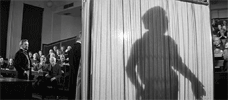
The Elephant Man
1980 -

My Bloody Valentine
1981 -

Who Can Kill a Child?
1976 -

Cannibal Holocaust
1980 -

Let Sleeping Corpses Lie
1974 -

John Carpenter’s Vampires
1998 -

Jaws 2
1978 -

A Warning to the Curious
1972 -

Wolf
1994 -
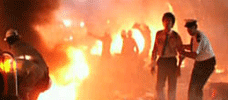
The Survivor
1981 -

Cannibal Ferox
1981 -
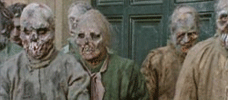
The Nights of Terror
1981 -

Death Becomes Her
1992 -

Alice, Sweet Alice
1976 -

Body Double
1984 -

Invocation of My Demon Brother
1969 -
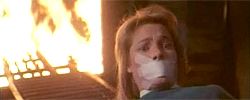
Phantasm II
1988 -

Emanuelle and the Last Cannibals
1977 -

The Wicker Man
1973 -

Maniac Cop
1988 -

The Legend of the 7 Golden Vampires
1974 -
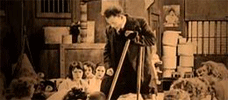
The Penalty
1920 -

Boxing Helena
1993 -

Chew on This
2005 -

Night of the Creeps
1986 -

Night of the Lepus
1972 -

Near Dark
1987 -

Army of Darkness
1992 -

The Brood
1979 -

The Lift
1983 -

Amsterdamned
1988 -

Silent Witness
1999 -

The Shaft
2001
We don’t do comments anymore, but you may contact us here or find us on Twitter or Facebook.



